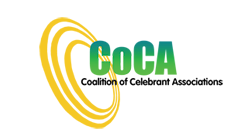- similar principles for appointment and registration being applied to civil as currently apply to Recognized religious (refer Division 1 – Subdivision A section 31 of the Marriage Act 1961)
- minimum overall average level of 24 weddings p.a per celebrant in each region, and upon the best applicant for an area by interview with a Regional Advisory Panel.
This will ensure that:
- marriage celebrants gain sufficient experience in conducting weddings to enhance marriage services to their couples and the sector overall.
- The role of civil marriage celebrant is viewed as an important professional role that is conducted on behalf of the government for the community.
Cost Recovery:
It is envisaged that full cost recovery would be obtained from the pre-training and pre- appointment processes and perhaps a portion of the annual fee. The person seeking the training and subsequent appointment would pay an interview fee. MLCS would cover the cost of the interview process.
Read more … see TABLE OF CONTENTS
FURTHER EXPLANATION (Posted 5th February 2012)
The following provides further explanation relating to Recommendation 2 of the CoCA submission on the Proposed Fee to the Attorney General’s Department.
Recommendation 2 appears as above:
It is important to say at the outset that this recommendation
- does not require any celebrant to do a specified number of weddings per year, and
- will not affect current celebrants in a negative way, unless they do not meet the basic Compliance requirements that apply now.
- smaller regions than the 2003- 2008 period ( 5 electorates rather that a state) but bigger than pre-2003
- higher ratio of the average number of weddings per celebrant per year than in 2010, but lower than pre-2003 years
- higher standards of entry based upon a standard pre-appointment assessment, independent of RTOs
- pre-appointment assessment and interview by a Regional Advisory Panel
- the selection of the best person for the role for that region
- This concept is a combination of “community need” and the “selection by interview” of what normally happens in public or private organisations, when a vacancy occurs.
- It is also based upon the reality that whilst everyone can aspire and train for a particular role in life, it cannot be guaranteed that there will be a matching position just for them when they want it. This is especially so for an important government role.
It needs to be highlighted that this figure of 24 weddings or an average of one per fortnight is the AVERAGE numberof weddings across ALL the celebrants in a year across a REGION, NOT per celebrant.
Currently (RIS 2010) the Ratio of weddings per celebrant per year across Australia is 6.6 weddings
In 1999 the Ratio of weddings per celebrant per year across Australia was 35 weddings
In 1995 the Ratio of weddings per celebrant per year across Australia was 64 weddings
The second box in this section called Table 1 – CIVIL MARRIAGES 1999 shows the actual spread of weddings done by independent celebrants in 1999.
For the AVERAGE of 35 weddings per celebrant in 1999, there is awide spread of weddings done by independent marriage celebrants:
• about 7% did no weddings
• about 30% did between 1 and 10
• about 26% did between 11 and 25
• about 22% did between 26 and 50
• about 12 % did between 51 and 100
• about 2.5 % did between 101 and 150
• about 1 % did between over 150
Therefore this recommendation is that no more appointments should be made for a particular region until the ratio across that region is 24 or over.
It means approximately 25 % of current marriage celebrants would need to resign before any more marriage celebrants would be appointed.
And then new celebrants would be selected by interview by a Regional Panel from those on the waiting list for that region.
This recommendation would also allow the Marriage Law and Celebrant Section a number of years to concentrate onbringing in other strategies to increase professionalism.
In its initial response to the Regulation Impact Statement, CoCA stated:
“The major element contributing to ensuing difficulties within the marriage celebrant program was permitting appointment of unlimited numbers of marriage celebrants.
- Contrary to advice received from the marriage celebrant industry at the time and this was addressed by the Attorney, at the time of introducing the radical changes (referred to as reforms), as noting celebrants’ and celebrant associations’ concern over an anticipated massive increase in numbers – (far outweighing any need for their services) given Australia’s limited and basically static number of marriages each year.
- The then Attorney said no substantial increase in numbers was expected given higher training requirements and natural attrition. At that time (pre 2003) couples had no difficulty locating a celebrant to suit them and it was argued there were too many celebrants even then!
- Now, with little change to numbers of marriages in Australia each year, the number of celebrants has grown to in excess of 10,000 and more continue to be appointed. Celebrant numbers prior to 2003 were around 2000 active marriage celebrants Australia wide.
- In keeping with the needs based conditions of the marriage celebrant program no greater number of celebrants was appointed than needed by Australia’s marrying couples.
- The Attorney-General introducing the program, the Hon Lionel Murphy stated ‘there should never be so many celebrants that they cannot acquire the skills and knowledge they and their client couples need’.”


